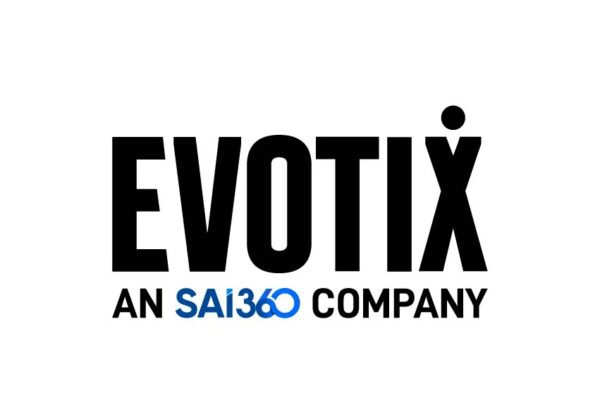CSRD Preparation: 7 Things You Need to Know
Editor’s Note: This article was originally published on July 14, 2023, prior to the adoption of the European Sustainability Reporting Standards (ESRS).
Key Takeaways

The Corporate Sustainability Reporting Directive (CSRD) is a new reporting standard designed to amend and extend the 2014 Non-Financial Reporting Directive (NFRD) by providing investors and stakeholders with more reliable and comparable information on companies’ environmental and social impacts. However, CSRD is much more ambitious than NFRD, and the volume and details of the requirements, with 80 disclosure requirements requiring thousands of data points, are unprecedented.
To ensure compliance, companies must begin preparing for CSRD now.
1. Who must comply with CSRD?
The CSRD impacts all large companies either listed or non-listed in the EU market.
A “large” company means you have two of these three criteria: €40 million in net turnover, €20 million in assets, and/or at least 250 employees). These companies will have to consider the information at the subsidiary level.
Additionally, non-EU companies with a turnover of over €150 million with operations of at least one subsidiary that meets the general scoping of the CSRD or branch in the EU that generated a net turnover greater than €40M will have to comply.
It’s worth noting that small and medium-sized enterprises (SMEs) are also affected by CSRD, but they have the option to delay their reporting obligations until 2026. This provides smaller businesses with more time to prepare their sustainability frameworks and reporting mechanisms.
2. What does the CSRD require of companies?
The CSRD will require all large companies to report on a wide range of sustainability issues, including environmental impact, social impact, and governance matters. This includes management commentary and data on the company’s strategy, governance, materiality assessment, and performance metrics.
Unlike the Taskforce on Climate-related Financial Disclosures (TCFD), a framework that focuses only on climate, the CSRD will encompass quantitative and qualitative disclosures across various sustainability topics. For example, companies will need to collect data such as the carbon footprint of the products purchased, life cycle analysis from the cradle to the grave, recycling quota at the end of the value chain, human rights issues, etc., and report on them.
Companies must have streamlined data collection and analytics capabilities in one centralized solution to comply with the CSRD legislation. Additionally, CSRD will require companies to develop a sustainability reporting framework. This framework will need to be consistent with CSRD’s requirements. Companies will not be able to achieve this without breaking down the silos of the information flow within the business.
Additionally, companies will need to adopt double materiality assessments, meaning they must report on both how sustainability issues affect their business and how their business activities impact society and the environment. This shift represents a more holistic view of corporate responsibility, going beyond financial performance alone.
3. When does CSRD reporting happen?
The CSRD reporting follows a specific timeline that includes several important dates.
Starting from October 1, 2026, specific terms will be defined to govern the review process, providing auditors with clear guidelines to follow when examining the disclosed information.
In 2028, after an assessment, there is a possibility of introducing reasonable assurance if it does not impose a significant burden on companies. To attain this higher level of assurance, companies must ensure they meet the necessary requirements.
Here are some additional relevant dates related to CSRD reporting:
- By June of 2023, the first set of standards will be adopted, still in the draft stage at the time of this writing. This milestone signifies an important step towards establishing a framework for CSRD reporting.
- From January 1, 2024, large public-interest companies with 500 or more employees will already be subject to the non-financial reporting directive. They will be required to submit reports in 2025, ensuring an early start to reporting obligations.
- From January 1, 2025, reports will be due in 2026 for large companies (as defined above) not presently subject to the non-financial reporting directive. This expands the scope of reporting requirements to include more companies and promotes transparency across the board.
- From January 1, 2026, reports will be due in 2026 for listed Subject Matter Experts (SMEs) and other undertakings. SMEs have the option to opt-out until 2026.
4. What role does technology play?
The digital transformation of the reporting ecosystem will require streamlined data collection and analysis of volumes of data in a framework of technical characteristics that may not currently exist in many organizations.
Most information that needs to be collected is already available to most companies. However, accessing this data from silos in varying departments across different teams can be challenging. Technology streamlines processes and systems, enabling data quality and transparency, and facilitates third parties to perform assurance procedures in line with CSRD requirements.
Technology will also play a vital role in facilitating comparisons, monitoring changes over time, and aiding stakeholders, including investors, in analyzing publicly available information and engaging with companies. This highlights the need for companies to adapt and leverage available tools to meet the evolving requirements of sustainability reporting.
One important aspect to consider is the role of technology in the multidisciplinary effort of sustainability reporting. As sustainability reporting becomes equivalent to financial reporting, it will be subject to similar strict norms but with a faster pace of evolution.
CSRD reporting is an evolving space and there will be a future need to digitally tag the metrics in reports. Tagging will need to adhere to an XBRL taxonomy that is currently being developed. Companies will also need to make the data accessible via the EU’s forthcoming European Single Access Point (ESAP) database. The European Single Access Point database, as the name suggests, provides a single access point for public financial and sustainability-related information on EU companies and EU investment products. Both these upcoming developments will undoubtedly require technological solutions to enable companies to fully adhere to CSRD reporting requirements.
Moreover, advanced technologies like AI and machine learning can enhance predictive analytics and help identify potential sustainability risks before they become critical. These tools can also automate the reporting process, reducing manual errors and ensuring data integrity across all levels of the organization.
5. How can organizations prepare for CSRD?
Meeting CSRD requirements requires a comprehensive understanding of applicable policies, target setting, and standardized information collection to ensure effective and accurate disclosure at the company level.
It is no longer sufficient to rely on a decentralized approach where each office or site manages its compliance independently. Instead, companies must establish a cohesive framework encompassing company-wide policies, goals, and measurement of results across all sites.
Comprehend what information may be requested and ensure you have it readily available. Have a clear understanding of compliance and day-to-day operations within a sustainable context.
Adapting to these changes requires an enhanced capacity to gather, organize, and analyze volumes of data related to compliance and sustainability. By aligning your company’s practices with a unified approach, you can better navigate reporting requirements and ensure a holistic understanding of sustainability performance.
When it comes to policy disclosure, communicate how your company addresses material impacts. Understand the applicable requirements within your specific context and implement appropriate measures.
Additionally, demonstrate preventive and control measures for incidents and emergencies. Be aware of emergency preparedness requirements and collaborate with relevant authorities, when necessary, particularly if your facility poses a high risk.
The next aspect is setting targets. CSRD mandates the establishment of targets, which must also be disclosed. Clarify whether your targets are based on legislation or voluntary. Furthermore, all information must be collected at the company level and presented in a standardized manner. Standardization is essential because different countries may use varying measures and reporting frameworks. Ensuring consistency and comparability across your disclosures.
Also good to know is that many organizations, developing an internal cross-functional team that includes legal, finance, and ESG experts is critical to navigating the complexities of CSRD. This ensures that all departments are aligned with sustainability goals and are actively contributing to the data collection and reporting process.
6. Where should disclosures be made?
The CSRD requires the disclosure of sustainability information in a dedicated section within the company management report. It is important to note that CSRD differs from other reporting frameworks, such as TCFD, which allows companies to make disclosures outside the annual report. With CSRD, companies must digitally tag reported sustainability information in accordance with a digital taxonomy, which will help users locate the information.
To ensure consistency and connectivity of financial and sustainability information, a statutory or financial auditor will need to provide an assurance opinion over the sustainability report. The assurance report issued must be publicly disclosed with the annual financial report.
7. What are the ESRS Standards?
The EU Sustainability Reporting Standards (ESRS) outline what ESG information and metrics are reportable under CSRD.
- Environment: Five standards cover the environment: climate change, pollution, water and marine resources, biodiversity and ecosystems, resource use, and circular economy.
- Social: Four standards cover social: own workforce, workers in the value chain, affected communities, and consumers and end users
- Governance: One standard, business conduct, covers governance.
- Two additional overarching standards applicable to all Sustainability topics include ESRS 1 on general requirements and ESRS 2 on general disclosures.
How SAI360 Can Help
SAI360’s ESG platform is a comprehensive solution that helps organizations manage their ESG and Sustainability programs. Our platform’s agnostic approach to standards and frameworks offers a fast start so you can begin meeting disclosure reporting requirements with one central configurable platform.
SAI360 supports the management of any qualitative and quantitative metric across all ESG factors.
Digitalization offers an efficient way to manage metrics and obligations by automating data collection and disclosure reporting.
The platform includes a suite of tools and resources that can help organizations:
Business Planning: Enables companies to plan, and track ESG goals, plans, and targets
ESG and Sustainability Metrics Management: Centralize data for reporting. Framework agnostic allows you to link multiple framework requirements to metrics to ease data capture and be able to compare against any ESG Reporting Frameworks (e.g., GRI, TCFD, etc.)
Emissions Management: Our capabilities automate the process of collecting data, calculating emissions, reporting, and analytics in one centralized software module assuring cost savings and time to value.
Reporting and Analytics: Measure Performance over time to drive actionable insights
SAI360 metrics management can help you manage metrics and reporting through an end-to-end process, from defining important metrics to reporting, irrespective of standards and frameworks.
Final Thoughts
Companies that start early will be more prepared by the time CSRD takes effect. The CSRD is a complex regulation, and it is imperative for companies to understand it and to start preparing for it now.
By doing so, you can ensure you are compliant with the CSRD and that you can demonstrate your commitment to sustainability to stakeholders.




